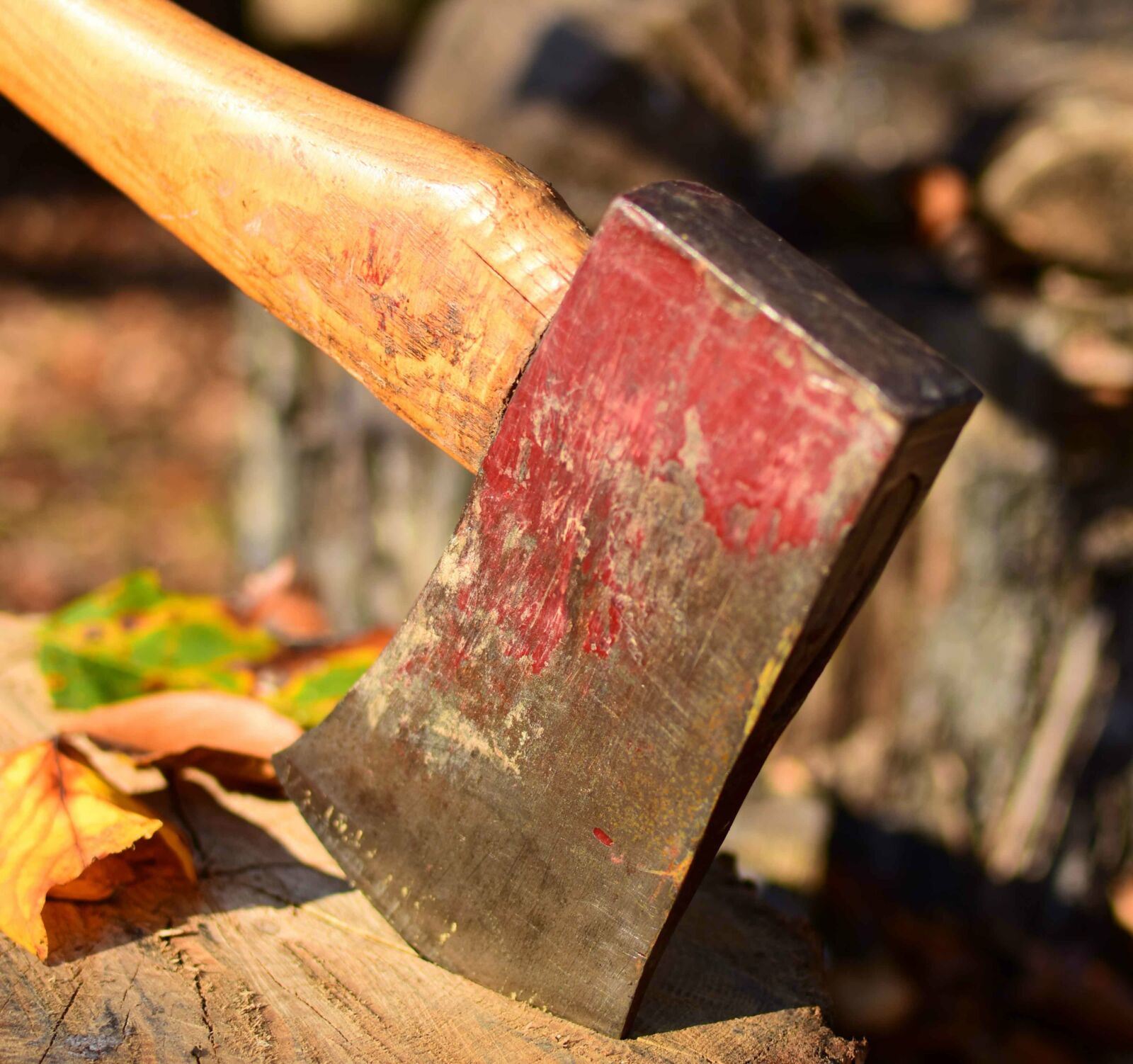Our family’s forest-green, metal Coleman cooler with the big silver thumb latch withstood the tests of time and six rowdy boys. On countless family camping trips this sturdy box formed the camp’s centerpiece. It served as table, seat, and of course, the place to sneak snacks if the rusty metal hinges didn’t betray us with their telltale squeak.
A relic now, that old beloved cooler is eclipsed by today’s fancy plastic polymer models sporting far better seals and insulation and (a boon for modern candy bar thieves) hardware less prone to rust.

Photo courtesy of Ray A. Foote
Other gear has evolved as well. Even the venerable camp stove bears little resemblance to its modern counterparts. Lightweight, collapsible, nesting elements make for easier packing while still delivering controllable BTUs needed to cook elegant camping meals. My recollection from Boy Scout days was a big suitcase-sized stove that we lugged into camp along with our heavy army-surplus canvas tents.
America Heads Outside
Technical innovation is rapidly reshaping the outdoor gear industry as new fabrics, polymers, lightweight alloys, and even nanotechnology revolutionize how items perform. Tents grow steadily lighter, fabrics more breathable, and bicycles stronger, even as they too shed pounds.
The recent surge in innovative watersports rests on inflatable craft with fiberglass-like rigidity. By employing a special “drop stitch” design with tens of thousands of tiny threads connecting two pliable sheets, these new watercraft become rock hard when inflated. In just a few years, an entire class of standup paddleboards, kayaks and other waterborne gear has come to market.
With its genesis in the 1950s, the entire consumer outdoor gear industry is relatively young. After World War II, rising American incomes and mobility, beckoning public lands, the emergence of regular family vacations and a plethora of inexpensive military surplus gear coalesced as “outdoor recreation.” Refinements that made possible everything from car camping to backpacking to rock climbing soon followed, and the industry embraced innovation as newer, lighter, better became the marketing buzzwords that drive sales today.
A Head and a Haft
Does anything stay the same? In an industry where gear made six months ago is considered outdated, it’s easy to wonder. One tool that has changed perhaps less than any other is a truly elemental device: the axe. As early as 10,000 BC, our ancestors used primitive “hand axes,” simple sharp stones grasped tightly. Four thousand years later, a handle, or a “haft,” was added. Around 2,000 BC, metal heads appeared.
From that point forward, basic axe design has changed remarkably little: just a head and a haft.
Interestingly, our nomenclature has evolved in far more varied and colorful ways. The haft is comprised of the belly, throat, knob and grip. The seemingly-simple head features its own anatomy of cheek, toe, heel, beard and more.
While the shape hasn’t changed much, the axe is not entirely immune to modern innovations. The metallurgy in the head has advanced with today’s high-quality steel that holds a better edge longer. Some of the finest axes today are being made in Australia, New Zealand and Sweden where a renewed focus on craftsmanship, and metallurgy in particular, has emerged. Traditionally, hafts in the U.S. have been made of hickory.

Photo by Ray A. Foote
“Hickory is simply best for strength and durability; it has proven itself,” explains Bob Beckley of the U.S. Forest Service’s Technology and Development Program in Missoula, Montana. Since the 1960s, synthetic handles have come on the market, though many prefer the feel of wood because it dissipates the energy of the blow better and can be shaped to fit the user’s hands. Energy dissipation is also why all the metal behind the cutting edge (all the way back to the flattened “poll” end) is softer; it transfers less vibration down the haft.
Beckley, an author and expert on traditional skills, brings to life this ancient tool’s history. Prior to the American Revolution, axe patterns were distinctly European. “As America was born, so was the American style of axe we know today. Hundreds of distinctive axe patterns or modifications emerged in the young nation: the hewing axe, the ice axe, and many with regional names” like the Puget Sound Falling Axe with its long 44-inch handle (standard is 36 inches). The longer handle would reach farther across and deeper into the huge conifers of the Pacific Northwest. These were handmade tools, each adapted to its particular environment.
Beckley describes himself as “specializing in those skills that at one time everybody who worked in the woods knew.” He notes that the axe’s “heyday was between 1850 and World War II, after which virtually all American industries changed, and few returned to making simple hand tools in low demand,” particularly as chainsaws gained favor.
Axes have always been a key tool for the Forest Service; the agency still maintains an axe manual.
Up through the 1980s, every Forest Service vehicle going into the woods was required to carry an axe, shovel and bucket. Beckley adds that axes “remain integral to the Forest Service mission, including work in Wilderness Areas,” where policy requires crews to use traditional methods.
Enduring Connection
A mystical magnetism draws people to the simple act of driving a forged blade into yielding wood. I know people who split wood even though they own no fireplace. Lumberjack competitions are perennially popular. Canada, which gave us the term “lumberjack” more than a century ago, has a Backyard Axe Throwing League that hosts events and parties, boasting nine venues and more than 150,000 throwers to date. They describe themselves as “a casual urban venue to experience the thrill of axe throwing.” The trend appears to be moving south. In Philadelphia, Urban Axes welcomes walk-ins or parties up to 24 to try their hand at throwing.
Axe throwing might allow alienated urbanites to feel like they have something at least symbolically connected to nature in their hands.
And this isn’t just for the guys: Karen Heller of the Washington Post recently reported that on some league nights at Urban Axes, nearly half of the throwers are women.
This connection between urbanites and axe work is not new. Paul Bunyan, the genial axe-wielding giant of American folklore, emerged in the late nineteenth century during a period of rapid urbanization and social change. The oral tradition—by most accounts from Wisconsin logging camps—was appropriated by advertisers starting in 1916, when Bunyan came to reflect a nostalgic, idealized image of manly work as millions of jobs shifted to more indoor, clerical and technical roles. Recent years have even seen an urban lumberjack aesthetic reprised in men’s fashion built around boots, flannel and beards (all parodied mercilessly by Internet memes).
“All good men love an axe,” wrote ecologist John Stewart Collis in The Worm Forgives the Plough. Leo Tolstoy regarded axe work as a religious discipline. George Bernard Shaw declared that it kept him sane. Having experienced the deep reward of using this simple but powerful tool to good effect, I can relate to Shaw’s claim.
Few of us are lumberjacks today, but many of us enjoy using an axe. Having grown up splitting logs with my dad for our fireplace, it felt natural to continue the backyard tradition with my own children, even if our suburban D.C. neighbors look askance at our exertions. I taught our boys the aphorism that “splitting wood warms you twice.” We would try our hand at sharpening the bit. (Abraham Lincoln said, “Give me six hours to chop down a tree, and I’ll spend the first four sharpening the axe.”) We would argue the merits of axe versus maul versus other tools. The axe won out each time for smaller pieces, and of course for felling. Sledge and wedge was a winning combination for years until we discovered the maul, its broader, heavier head working wonders on larger diameter stock.
I suspect each of us amateur backyard axe wielders harbors momentary self-images of the rugged lumberjack. Perhaps we know at some deep level that we are using a simple tool for the ages, sharing a visceral experience across millennia.
“The axe was the first tool known to man,” explains Beckley of the Forest Service. “At one time, everybody had one. It is such a fundamental tool. Probably the most cherished one.”

